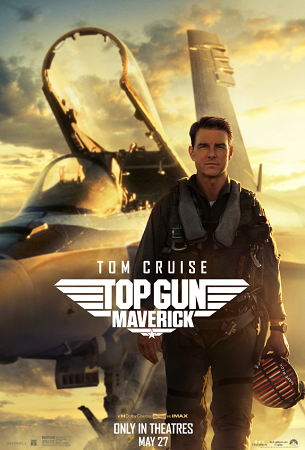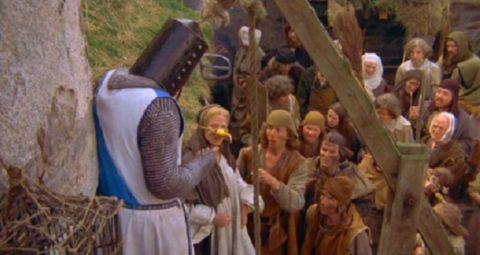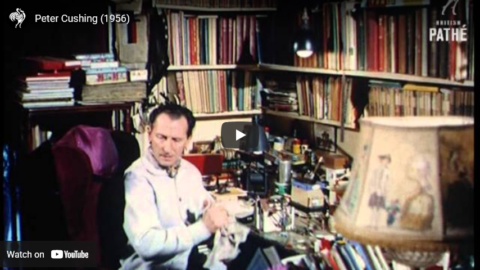SO YOU’RE SAYING CELEBRITIES ARE A CULTURE PROBLEM?
Well, actually, I’m asking.
Are celebrities one of the reasons our culture is now so chaotic and unstable?
There is a strong case for “yes”.
For starters, celebrities have many flaws.
They can be self centered, as when Madonna was asked to celebrate Aretha Franklin. She referenced herself more than 50 times, and Ms. Franklin 4 times.
They can be naive, as when Gal Gadot lead a sing-along with fellow celebrities from the comfort and protection of their beautiful homes. She now agrees this was “in poor taste”.
Celebrities are not durable. That’s our our fault. We raise them up and we strike them down. And because we have the attention span of a French monarch, their moment in the spot light is fleeting. But it means our relationship with them is often fleeting.
Celebrities are vulnerable. Being a celebrity is incredibly perilous. Living in the very thin air up there, no mortal should wish for this. So celebrities suffer. They have break downs. They slide into drug dependency and bad relationships. At this point it is hard for them to be exemplars. Unless of course we are struggling too.
But here’s the key reason to treat celebrities as a culture problem.
In the course of the 20th century, celebrities ate their way through Western society, consuming or discrediting any and every elite that dared compete with them.
In this period, people still cared about scientists and other experts. They saw editors, publishers, judges, and professors as figures of authority. They admired and sought to emulate people of exalted social standing. They looked to religious leaders to address the big issues of the day. Artists, a few of them, were consulted. Designers, some of them, were gods.
This is mostly gone. Celebrities brought them low. It’s not clear that they meant to. It’s more likely that the simply won the popularity contest of contemporary culture.
We could choose between (nearly) dead white males, cranky, pipe smoking, vest wearing, utterly pompous creatures who would occasionally stoop to correct us. Or we could go with the effortlessly charismatic, blindingly beautiful, funny, endearing, eager-to-please people. I mean just look at the people in the “selfie” above. You can’t help but be wowed. Game, set and match to the movie star.
Celebrities remind me of the Rem Koolhaas library in Seattle.
This never fails to make me think of a mechanical monster that’s just crawled out of Seattle’s Elliot Bay and climbed the hill looking for lunch.
That’s what celebrities did. They came up out of the lagoon and helped themselves to all the culture they could find. They just ate everything.
It started with children’s books. They had to write em. Then it was lines of perfume and clothing. They had to design em. Then of course it was politics. How could we possibly do without em? Most of the people running for office in the US are now strikingly attractive. Some of them could actually be part-time models. This is the celebrity effect.
But here’s the other reason that the celebrity influence might be a cause of our instability. It is that they have colonized our young. There are lots of ways of making this argument, but I think “exhibit A” is probably TikTok. This platform matters because it mints celebrity. And that matters because a fifteen year old typically believes he or she matters in exact proportion to his or her fame.
Grant McCracken, “Culture Problem: celebrities”, Future Watch: an anthropological pov, 2022-03-17.
June 18, 2022
June 16, 2022
Paul Wells takes in a current movie … and likes it
I’ve never been much of a movie-goer, even before the neverending pandemic lockdown theatre landed on us in 2020, so the chances of me going to see something like Top Gun: Maverick were pretty low (especially as I never bothered to watch the original, back in the day). Paul Wells is in the middle of a European trip, so he did what every travelling North American would do somewhere on the continent of history and culture: he watched a current-release American movie:
The mystery of Maverick is why, by next weekend, it will pass Doctor Strange in the Convolution of Fan Service as the year’s biggest movie, why it is the biggest film of Tom Cruise’s charmed life — why it strikes such a chord in this moment, even though its premises, visual vocabulary and soundtrack are 36 years old. In terms of chronological distance from the original Top Gun, it’s as though the top-grossing movie of 1986 had been a sequel to 1950’s Annie Get Your Gun. (“And there has never been a star as sensational as Betty Hutton!” Annie‘s trailer proclaims. Switch Tom Cruise in for poor Betty and suddenly the claim may actually be true.)
The simplest hypothesis is that Maverick is just big and loud, so you can leave your brain at home and enjoy the spectacle. But lots of lousy movies nobody watched were big and loud, including Matrix: Resolutions and Ghostbusters: Afterlife, so there must be some fuller explanation.
This being a Substack newsletter, I suspect I’m contractually encouraged to argue that Maverick wins because it isn’t woke. I’m afraid I can’t oblige. I mean, the movie definitely makes only the barest acknowledgment of taking place in the 21st century. None of the hotshot young recruits pauses from the action to specify their pronouns. None decorates their flight helmets with empty square brackets to acknowledge their privilege. The film’s few concessions to cultural change since the MTV era have the effect, not of engaging today’s fights on provocatively old-fashioned terms, but of declining to engage. Joseph Kosinski, the journeyman special-effects technician brought in to direct this film in note-perfect homage to the style of the original Top Gun director Tony Scott, doesn’t even bother to make the film’s racial politics as minimally complex as Scott did in 1995’s Crimson Tide. Maverick‘s young recruits, diverse in gender and ethnicity, are awesomely interchangeable in every other way. One smirks, one has a moustache; the others have no identifying characteristics. (When half the recruits get cut from the big mission at the 90-minute mark, there is no dramatic payoff because it’s impossible to tell these people apart. “Sorry, Component A, I’ve decided to go with Component B.”) Nobody under 30 in this film has sex for either pleasure or procreation. Yearning for intimate touch is plainly something only old people do, like writing in cursive script or owning books.
As a cultural argument, Maverick is so close to being tabula rasa that there’s no real point interrogating it. But on another front, it succeeds resoundingly in popular art’s primary function of tantalizing simplification. It started to make sense when I realized that Cruise’s character, despite the denial inherent in his call sign, is a career civil servant.
This is a movie about the action of a large modern state. It’s a film about public policy. Its central claim is a cathartic feat of Avengers-level denial. Just as the superhero movies offer us a made-up universe in which we have any hope of telling the good characters and the evil characters apart, Maverick posits a world in which modern governments can get anything done at all.
I may be influenced in this reading by the fact that I work in contemporary Ottawa. I’ve been writing variations on a simple question — Can Justin Trudeau get big things built? — since 2017. I’m hardly alone. And it’s hardly just a question about Trudeau, Ottawa or Canada. It’s been fun reading about chaos at Toronto’s Pearson airport, but last week the Financial Times ran a “big read” feature story about global airport chaos that didn’t even mention Pearson, Toronto or Canada. Joe Biden promised to Build Back Better. It’s not going great. Here in France, Emmanuel Macron is the first president to be re-elected in 20 years, a genuine feat, but it’s not going great. Brexit? Don’t ask.
A generic term for the ability of governments to do stuff is “state capacity”, and there’s a vague sense in the quasi-academic literature that it’s in decline, although, the real world being the real world, every element of this claim — that state capacity is declining, that it can be measured, that it even exists in any measurable form — is open to dispute. Still, it feels true, don’t it? The world was never great. In important ways it was worse than today. But it used to feel like it was possible to improve the thing, and now it just feels like everyone’s just firing blind and hoping for the best. COVID is a dynamite demonstration of this. Three successive Canadian federal health ministers were told, by a prime minister who prides himself on his ability to read the room, to get cracking on plain-paper packaging for tobacco products. And then the biggest public-health disaster of our lifetimes opened up its jumbo can of whup-ass, and it wasn’t even in the mandate letters. And it’s hard to blame anyone involved. All the chaos that has ensued had its roots in the original chaos. Real life doesn’t have a plot. As Homer Simpson said, it’s just a bunch of stuff that happens.
June 5, 2022
QotD: The Matrix
The notion that reality is an illusion is a bit of a cliché, of course, but there are plenty of French philosophers willing to give it a bit of intellectual heft. The line in the screenplay about “the desert of the real” came from the eminent “Theorist” Jean Baudrillard, a great proponent of the notion that reality is simulation and the author of, among other books, The Gulf War Did Not Take Place. Instead, it was created and waged only on computer screens. “Since this war was won in advance,” wrote Baudrillard, “we will never know what it would have been like had it existed.” Did the Wachowskis seek permission to use the central thesis of his career? He could probably have sued for plagiarism — although, in turn, the film’s producers could argue that his theory that reality is a simulation is itself a simulation and that their alleged film did not take place.
The point is Andy and Larry Wachowski figured they’d hit on the perfect wrinkle for a classic postmodern nerd franchise — the Star Wars of our generation. And if you say, “Hang on, old boy, surely Star Wars is the Star Wars of our generation?”, I’d say, nah, it’s too 1930s radio serial, and its grandiosity is plonkingly earnest and squaresville instead of as coolly meta as Keanu Reeves’ too-bored-to-act acting style. The Matrix was quickly followed by The Matrix Revisited, The Matrix Reloaded, The Matrix Recycled, and Neo got paleo pretty quick. None of the sequels could quite match the initial red-pilling of surface reality, and so they simply dug the rabbit hole deeper. Zion is the last outpost of humanity — but maybe it’s merely a Matrix-within-the-Matrix? Ever consider that, huh? And what if Neo himself is a Matrix-within-the-Matrix-within-the-Matrix? He was supposed to be “The One” — but maybe one of the others is The One. Maybe The One flew over the cuckoo’s nest.
By the sequel, the Wachowskis’ “innovative visual style” (a Cecil B De Mille-scale computer game peopled by sullen pouters) was looking a lot less innovative: they did all the same things they did in the first film all over again, just more expensively and even more arbitrarily — the scene in which Keanu/Neo is fighting a hundred guys in black and doesn’t win, doesn’t lose, but just finds himself fighting vainly the old ennui and so buggers off after 15 minutes pretty much sums it up. By the second movie, Keanu had perfected his morose blank look, and fine actors like Laurence Fishburne were turning in performances so clunkily solemn you’d think they were auditioning for George Lucas. As usual, the subterranean city of Zion proved to be just another generic dystopian underground parking garage; and the orgiastic dance party looked like a weekend rave in Huddersfield.
Mark Steyn, “The Matrix”, Steyn Online, 2019-04-06.
June 4, 2022
QotD: A smidgen of forgiveness for the Boomers
For as much shit as I give them — and as much as they deserve it — I can forgive The Boomers quite a bit. In all previous history, having your entire world accommodate itself to your every whim was a privilege reserved for the more puissant monarchs of the bigger kingdoms. But starting about 1963, American life completely recalibrated itself around the passing fancies of ordinary suburban kids.
That has to mess with your head a bit.
In the same way, no previous generation had ever seen their youth commercialized and sold back to them in middle age, and that’s what messed with our heads. The passing fancies of those ordinary suburban kids in 1963 all involved sex, drugs, and rock ‘n’ roll. We — Gen X — wanted those things too, but since by definition nothing is lamer than your parents, we had to be all, like, you know, whatever about it.
If you can grok the concept of a 45 year old telling you — with complete, almost heartbreaking sincerity — not to trust anyone over 30, you can grok the 1990s.
If you can’t, I don’t recommend trying. It’s like an anti-koan — if you solve it, you’ll achieve a lower consciousness. But if you’re determined to experience it, get really, really, really drunk and watch Forrest Gump a few times back to back. Really experience it as a work of art … because it is. It’s meticulously constructed. Forrest Gump is a mildly retarded man who stumbles, through dumb fucking luck, into fame and fortune through every significant event of the last half century. (He even has a huge dick, although that’s a detail from the source novel that got left on the cutting room floor).
Is there any more perfect metaphor for My G-G-Generation than that?
That’s what we grew up with. That whole generation was what some wag said about George Bush the First: Born on third base, thinking he hit a triple. And, of course, by merciless application of cold logic: that was also us. The only difference was that while the Boomers were congenitally incapable of seeing it, we were congenitally incapable of getting over it. So, you know, like, whatever.
Severian, “A Meta-Review”, Founding Questions, 2022-02-24.
May 28, 2022
Morality is Dead. Hollywood Killed It.
Foundation for Economic Education
Published 27 May 2022What’s with all the nihilistic, amoral, dark anti-hero leads in movies and shows? Are we supposed to treat horrible characters as pinnacles of human behavior now?
The bleak content that’s crept its way mainstream over the last 10 years should concern us all. The stories we tell matter, for they influence what we believe and what values we adopt.
Fortunately, a renewed appreciation for natural rights and individualism could be the antidote to the immense darkness that’s blanketed American culture as of late. That’s what we’ll get down to on this feature episode of Out of Frame.
______________________________
FOLLOW/SUPPORT US:Support Out of Frame on Patreon or SubscribeStar:
https://www.patreon.com/OutofFrameShow
https://www.subscribestar.com/outoffr…Join our Discord: https://discord.gg/RKc4AcGQ9k
Sign up for our mailing list and never miss an episode again:
https://fee.org/oof-newsletterCheck out our podcast, Out of Frame: Behind the Scenes: https://www.youtube.com/channel/UCiS5…
Follow us EVERYWHERE!
https://linktr.ee/outofframefee
______________________________
CREDITS:
Written by Sean W. Malone
Produced by Sean W. Malone
Edited by Michael Ozias
Asst. Edited by Abby Richardson
May 14, 2022
Nostalgia for the Middle Ages?
In Wrong Side of History, Ed West considers the apparent rising interest in Europe’s Middle Ages and Renaissance in popular culture:
The genre has been aided by developments in cinematic technology, allowing the sort of special effects that made such productions in the 1980s and 90s somewhat ridiculous. But there may be deeper cultural significance to this medieval revival, and it is one that evokes a strange discomfort in many people. Because, while the academic field of medieval studies has become a branch of progressive theology, medievalism as expressed through popular culture feels much more conservative, and to some minds, even fascistic. At the very least, it is “Right-coded”.
This discomfort often flares up whenever a new film or series attempts to capture our imagination, voiced in comment pieces warning us that they might be popular for the wrong reasons, among unsavoury elements.
This is what happened with Viking epic The Northman, despite director Robert Eggar’s impeccably progressive politics. “The Northman‘s 10th-century society appears to be uniformly white and firmly divided along patriarchal lines,” The Guardian warned: “Men do the ruling and killing; women do the scheming and baby-making. Its hero, played by Alexander Skarsgård, is not a million miles from the ‘macho stereotype’ Eggers complained of – a brawny warrior who settles most disputes with a sword and without a shirt. Skarsgård’s love interest, played by Anya Taylor-Joy, could be the far-right male’s dream woman: beautiful, fair-haired, loyal to her man and committed to bearing his offspring. Even before the film’s release, far-right voices were giving their approval on the anonymous message board site 4chan.”
Wow, expressing approval of a beautiful, fair-haired woman who wants to settle down and have your children? Better call Prevent!
According to a piece in the Economist, the new fixation with the Middle Ages dates to the September 11 attacks, when “the American far right … developed a fascination with the Middle Ages and the Renaissance — in particular, with the idea of the West as a united civilisation that was fending off a challenge from the East …
“The embrace of the medieval extends from the alt-right online forum culture that has exploded in the last few years to stodgier old-school racists. Helmeted crusaders cry out the Latin war-cry ‘Deus vult!’ from memes circulated on Reddit and 4Chan. Images of Donald Trump, clad in mail with a cross embroidered on his chest, abound. Anti-Islam journals and websites name themselves after the Frankish king Charles Martel, who fought Muslim armies in the 8th century, or the (slightly post-medieval) Ottoman defeat at Vienna.”
This concern is real enough that I’ve noticed a trend for medieval historians to introduce their books with what might be best described as health warnings, lest they be enjoyed in the wrong way. Neil Price’s The Children of Ash and Elm, for instance, comes with a declaration of values in the introduction:
Over the centuries, a great many people have eagerly pressed the Vikings into (im)moral service, and others continue to do so… I strongly believe that any meaningful twenty-first-century engagement with the Vikings must acknowledge the often deeply problematic ways in which their memory is activated in the present …
The Viking world this book explorers was a strongly multi-cultural and multi-ethnic place, with all this implies in terms of population movement, interaction (in every sense of the word, including the most intimate), and the relative tolerance required. This extended far back into Northern prehistory. There was never any such thing as a “pure Nordic” bloodline, and the people of the time would have been baffled by the very notion. We use “Vikings” as a consciously problematic label for the majority population of Scandinavia, but they also shared their immediate world with others – in particular, the semi-nomadic Sami people. Their respective settlement histories stretch so deeply into the Stone Age past as to make any modern discussion of “who came first” absurd. Scandinavia had also welcomed immigrants for millennia before the Viking Age, and there is no doubt that a stroll through the market centres and trading places of the time would have been a vibrantly cosmopolitan experience.
Well, I won’t be recommending Mr Price’s book to my friends at 4Chan, I can tell you that.
April 17, 2022
Operation Mincemeat, 1943
Once an obscure bit of espionage and military disinformation, the events of Operation Mincemeat are being brought to the big screen (boy, does that term seem dated) in a feature film starring Colin Firth. Michael Curtis provides a look at the actual deception mission that inspired the film:

The corpse of Glyndwr Michael, dressed in a Royal Marine uniform with false documents and a fake ID, used in Operation Mincemeat, 1943.
Public domain image from The National Archives.
The story of the British deception, a fascinating story of Allied subterfuge, is now told in the film Operation Mincemeat. It is a remarkable and seemingly highly improbable story of a plan of Allied intelligence to deceive Hitler and misdirect German intelligence. Indeed, it is one of the best examples in history of military deception.
The concept of a plan starts with the Trout Memo, officially written in 1939 by Admiral John Godfrey, director of Naval Intelligence, but almost certainly written by his subordinate Lieutenant Commander Ian Fleming, not yet dreaming of 007, about the deception of an army in war time by fly fishing. Many ideas were suggested, including sending out tins of explosives disguised as food so that hungry sailors would pick them up. One idea, number 28 on the list, almost certainly the thought of Fleming who thought of elaborate deception options, was to use a dead body dressed as an airman dropped from a parachute that had failed and carrying false papers, and drop it where the Germans would find it and be deceived by it.
The deception was planned by a group, the Twenty Committee, XX, headed by Lieutenant Commander RNVR, Ewen Montagu, Cambridge, Harvard, a naval intelligence officer and prominent Jewish lawyer, who later became a judge, together with an RAF officer Squadron Leader Charles Cholmondeley. Montagu later wrote an account of the affair in a book, The Man who Never Was, 1953. The memory of the event is also simply commemorated in a mortuary in Hackney in East London where the body that was used in the plot is buried. In a rather unkind but truthful remark Montagu said of the man who was used, “The only worthwhile thing he ever did, he did after his death.”
The main deception in the plot was a personal letter purported to be from General Sir Archibald Nye to General Sir Harold Alexander, starting, “My dear Alex.” Nye’s letter contained details of sensitive topics, and of a new commander of the Guards brigade, and U.S. service medal awards. He also referred to Operation Husky, an imminent Allied invasion of Greece, that the Germans had been reinforcing and strengthening their defenses in Greece and Crete, and therefore the chief of the Imperial General Staff felt that the Allied troops planned for the assault were insufficient. Thus, it was agreed by the chiefs of staff that the 5th division should be reinforced by one brigade group for the assault on the beach south of Cape Araxos and that similar reinforcement should be made for the 56th division at Kalamata. The letter was a clever double bluff. Nye wrote that “we stand a very good chance of making the Germans think we will go for Sicily, it is an obvious objective and one about which they must be nervous.” To confuse Hitler, he therefore suggested the Allies would invade Sicily.
It is interesting but not surprising that a key figure in the deception appears to have been Ian Fleming, Mr. James Bond, who had written of methods to confuse the enemy, and was crucial to the Trout Memo.
The plot developed. After some difficulty a suitable body was found by a London coroner and kept on ice for few months. It was Glyndwr Michael, 34, homeless Welsh laborer, penniless, with mental health problems, who had died after ingesting rat poison in a London warehouse. He was transformed into Major William Martin, of the Royal Marines whose body contained love letters from a non-existent fiancé named Pam, a jewelry bill for an engagement ring, ticket stubs, religious medal, a copy of a letter marked “personal and most secret”, and above all the false Nye letter. The body had to look as if it had died in an air crash, but floated ashore and he had died at sea. Major Martin, his body wrapped in a life jacket, and with a black attaché case chained to his wrist, was found on April 30, 1943, by a Spanish fisherman off the coast of Huelva.
Even more unlikely than the plan itself was the impact the “secret” document had on Axis planning, summarized in the Wikipedia article:
On 14 May 1943 Grand Admiral Karl Dönitz met Hitler to discuss Dönitz’s recent visit to Italy, his meeting with the Italian leader Benito Mussolini and the progress of the war. The Admiral, referring to the Mincemeat documents as the “Anglo-Saxon order”, recorded
The Führer does not agree with … [Mussolini] that the most likely invasion point is Sicily. Furthermore, he believes that the discovered Anglo-Saxon order confirms the assumption that the planned attacks will be directed mainly against Sardinia and the Peloponnesus.
Hitler informed Mussolini that Greece, Sardinia and Corsica must be defended “at all costs”, and that German troops would be best placed to do the job. He ordered that the experienced 1st Panzer Division be transferred from France to Salonika, Greece. The order was intercepted by GC&CS on 21 May. By the end of June, German troop strength on Sardinia had been doubled to 10,000, with fighter aircraft also based there as support. German torpedo boats were moved from Sicily to the Greek islands in preparation. Seven German divisions transferred to Greece, raising the number present to eight, and ten were posted to the Balkans, raising the number present to 18.
On 9 July the Allies invaded Sicily in Operation Husky. German signals intercepted by GC&CS showed that even four hours after the invasion of Sicily began, twenty-one aircraft left Sicily to reinforce Sardinia. For a considerable time after the initial invasion, Hitler was still convinced that an attack on the Balkans was imminent, and in late July he sent General Erwin Rommel to Salonika to prepare the defence of the region. By the time the German high command realised the mistake, it was too late to make a difference.
April 15, 2022
Vladimir Putin as real-life Bond villain
In The Critic, Peter Caddick-Adams makes a case for Vladimir Putin being all of Ian Fleming’s fictional 007 adversaries brought to life in a single person:
I am certain Vladimir Putin has a giant coloured globe, or maybe a huge map set in a wall, which at the tap of a button, silently slides in and out of view. In his mind, he will no doubt have experimented with his artist’s palette, of coating many of his geographical neighbours with his favourite shade of bright, bloody crimson.
Talking of sliding panels operated by secret switches, I would be surprised if the Russian leader has not watched all the James Bond movies, if only out of professional interest. He would see, if so, that he is every one of Ian Fleming’s villainous creations — Ernst Stavro Blofeld, Le Chiffre, Sir Hugo Drax, Auric Goldfinger, Emilio Largo, Dr Julius No and Francisco Scaramanga — all rolled into one person.
Presiding over the robber state that is the Russian Federation, Putin is at once militarily and politically all-powerful, but also the master international criminal. At a 2017 US Senate Judiciary Hearing, the Putin arch-critic and American financier, Bill Browder, estimated the Russian had “accumulated $200 billion of ill-gotten gains”, describing him as “one of the richest men in the world, if not the richest”.
It was the Second World War espionage boss, Commander Ian Fleming, who brought not only his world famous spy to life, but also the lairs of James Bond’s opponents. Fleming had inspected many of the Nazi underground factories and subterranean rocket bases immediately after the defeat of the Fatherland in 1945. In print, they appeared as his villains’ secret headquarters.
Fleming’s novels were in turn translated into celluloid by the talent of set designer Ken Adam. He worked on seven Bond movies, beginning with Dr No in 1962, via You Only Live Twice, and Diamonds Are Forever, and devised the circular War Room in Stanley Kubrick’s Dr Strangelove of 1964. If you don’t remember the scene, you’ll recall its most poignant line: “Please, gentlemen, you can’t fight in here. This is the War Room.”
Adam was also working with inside knowledge, for he was born in Berlin, to Jewish parents, who fled to Britain in 1934. On the outbreak of war, Adam enlisted into a British army engineering unit composed of Axis nationals, designing bomb shelters. He later joined the Royal Air Force as a fighter pilot, where he was known as “Heiney the Tank Buster”. After VE-Day, Adam toured the concrete structures and German bases he had attacked. “I flew fighters in the war, made some great movies and was Knighted by the Queen [in 2003]. Not bad for a Jewish lad from Berlin,” he told me in an interview.
In a bizarre case of real life imitating fiction, it was Alexei Navalny, now rotting in Russia’s harshest penal colony for his exposé, who discovered Putin’s covert lair. Sprawling on the Black Sea coast, it might have been designed by Ken Adam. The Russian leader’s $1.9 billion palace comes with a below-ground grand salon, hollowed-out of the cliff-face, lit by a gigantic panoramic window, that, at the touch of another button, can be retracted to let in the sea breezes. Access to the beach or the rest of the complex is by tunnels carved into the rock.
Its existence is naturally denied by the Kremlin, but the site, at Cape Idokopas, near the village of Praskoveevka, is equipped with two helipads, and reputedly 39 times the size of Monaco. I make the basic assumption that scores of designer-stubbled security muscle, dressed in black, toting sub-machine-guns, with a shoot-on-sight brief, will be prowling about.
April 9, 2022
“Woke Disney” is far from a new thing
Geoff Shullenberger points out that Disney’s reputation for family-friendly media rests rather uneasily on the corporation’s actual products:
“Disney is the worst enemy of family harmony.” You’d be forgiven for thinking those words were uttered yesterday, given the number of conservative politicians and pundits castigating Disney for “grooming children” following its criticism of the “Don’t say gay” bill.
In fact, the statement appeared just over 50 years ago, in a polemical analysis of Disney cartoons written by two Marxist militants, the Chilean writer Ariel Dorfman and the Belgian sociologist Armand Mattelart. How to Read Donald Duck: Imperialist Ideology in the Disney Comic was published in Chile during the brief rule of Salvador Allende as part of an attempt by Allende’s leftist allies to push back against American cultural influence. The book became a bestseller, but after Augusto Pinochet’s 1973 coup, it was banned and publicly burned.
The Right’s current lament for the betrayal of “traditional families who want to hold onto innocent entertainment for their kids” proceeds from the premise that this “woke Disney” is a deviation from the company’s benevolent past. But Dorfman and Mattelart, all the way back in 1971, contested this assumption of innocence. Although their methodology is Marxian and their aims overtly anti-capitalist, their allegations foreshadow the American Right’s current concerns in surprising ways.
[…]
How to Read Donald Duck contains many of the expected Left-wing criticisms of patriarchy and gender roles, but it also includes observations that might be surprising to ideologues today. Notably, as one illustration of the propaganda functions taken on by Disney in the Global South, the authors remark that the US Agency for International Development has circulated films featuring Disney characters promoting contraception. They reinforce this association with the title of their chapter on Disney family dynamics: “Uncle, buy me a contraceptive …”
Like many radicals at the time, Dorfman and Mattelart saw the US state’s growing interest in controlling fertility in the developing world as consistent with a broader campaign to suppress the value placed on family in the subject nations of its economic empire; this was deemed to be in tension with values such as efficiency, productivity, individualism, and competition. Disney’s exclusion of references to reproductive sexuality, in this light, looks less like an attempt to protect childhood innocence, than part and parcel of the larger modern decoupling of sex from reproduction.
It all suggests that the supposed sexual innocence of Disney’s dreamscapes was never aligned with “family values” in the first place and the Right’s current war on Disney isn’t about family — it is simply the latest phase of its realisation that corporate America has now largely aligned itself with the values of the cultural Left.
For, in fact, Disney’s vast influence on the imaginations of children has been enabled by market society’s weakening of the authority of the family. With parents overburdened by the demands of work, important aspects of child-rearing are entrusted to the entertainment industry. Disney has capitalised on this exploding demand more than any other company. If we take “grooming” to simply mean instilling values alien to the family into children, Dorfman and Mattelart would suggest that Disney has never been innocent of this charge.
March 30, 2022
March 27, 2022
QotD: Period culture in old movies and TV shows
From the vantage point of the 1970’s, “old” TV shows were mostly things from the 1960’s, but old movies from the 40’s and 50’s were common too. In other words, if you wanted to peek back in time to the previous eras of American culture, you could reliably go back a decade and selectively go back a few decades. Bad old TV shows like Get Smart and Star Trek would go into syndication, but bad old movies were just forgotten. The old movies that were shown on TV were usually the good ones that people liked.
What that meant is if you wanted to know what it was like to live in 1945, you had to ask someone who was alive in 1945. You could get a little taste of it from watching old movies on a Saturday afternoon, but that was a stylized version. To really get a feel for the age before color movies and television, you had to rely on the fading memories of grandma and grandpa. Of course, this was true for all of human history until recent. It’s why old people are good at telling stories about the old days. They’re built for it.
Today it is different. I watched The Thomas Crown Affair the other night off the Kodi machine. This was the 1968 version with Faye Dunaway and Steve McQueen. There was a remake of this in 1999 with Pierce Bronson. I had seen the remake a few times, but I never saw the original. In fact, I did not know there was an original. That’s a bit of interesting cultural data right there. Just about every movie produced over the last twenty-five years is either a remake or made from a children’s comic book.
What I found remarkable about the movie is something I notice whenever I watch old movies and that is the maturity. A movie about the cat and mouse between a male and female today will have at least half an hour of rutting and humping, along with some explosions and lots of vulgar language. The modern presentation of male-female relations is so crude, that porn makers of the past would have been offended. In the old days, the film maker and audience expected a more sophisticated portrayal of sexual relations.
That is the other thing that turns up in old movies and television. Hollywood made assumptions about the cultural awareness of the audience we don’t see now. In The Thomas Crown Affair, there is a long scene around a chess game. It was supposed to be a stand in for the sexual tension between McQueen and Dunaway. It’s a bit ham-handed, but vastly more sophisticated than anything you would see today. One reason is the typical viewer today knows nothing about chess, so it would be lost on them.
Part of that is due to Hollywood relying on international audiences to make money. You can’t expect to make money in China or India when your film is full of essential references to Anglo-Saxon cultural items. When you make films for the universal culture, you are making movies for a culture that does not exist. That means the goal is to remove cultural references, rather than rely on them to tell a story. There can be no subtlety and nuance without common cultural reference points understood by the audience.
The Z Man, “Old Movies”, The Z Blog, 2019-02-13.
March 26, 2022
Hollywood: Government Propaganda? – WW2 Special
World War Two
Published 24 Mar 2022Along with its arsenal of carriers, bombers, and tanks, America has perhaps the most powerful weapon of all: Hollywood. Hollywood is pumping out American and Allied propaganda as quickly as it can. But was this always the case?
(more…)
March 13, 2022
The amazing railroad movie that damaged Buster Keaton’s career – The General
Train of Thought
Published 26 Nov 2021In this video, we take a look at the tragedy of The General and how, what is now considered a classic of the silent era, was panned by audiences upon its release. Yes, I have been watching a lot of Buster Keaton films recently, how can you tell.
The General (Give it a watch): https://youtu.be/iHlBMKtgPOA
Please subscribe for more
This video falls under the fair use act of 1976
QotD: The Kaiser’s army and their Auftragstaktik innovations
Auftragstaktik is German for “mission-type tactics” or “mission-oriented tactics”, and it’s the main non-genetic reason they were so fearsome in battle back in the 20th century. Basically the idea is to delegate command authority to the lowest possible level, because the guys who are actually in the shit have a much better sense of the tactical realities than the guys back at headquarters. So long as the guys at the front are adequately briefed about command’s strategic objectives, they can, and should, make the tactical decisions in their areas of responsibility.
They started developing it before WWI, but proof of concept was in the trenches, and it succeeded spectacularly. It’s hard to exaggerate just how outmanned and outgunned the Germans were in that conflict, and I don’t have the exact numbers to hand, but one especially fearsome measure was “artillery density”. On the German side, the preparatory barrage before an attack averaged, at best, something like 1 shell per square foot (this is from memory, so doubtless incorrect, but you get the idea). The Allies achieved something like one shell per square inch, and there you have it …
… or there you should’ve had it, if the Allies had anything close to German-level command-and-control. But they didn’t. British WW1 memoirs, especially, are full of the kinds of ludicrous fuckups that Joseph Heller wouldn’t dare put in his novels. Robert Graves (yeah, I know, not the world’s most trustworthy source) had an especially funny scene where his company got this elaborate set of orders to move to such-and-such coordinates, build an elaborate strongpoint (laid out in minute detail), then move on to some other coordinates and do something else, again spelled out to the nth degree.
Those coordinates were, of course, a mile and a half behind enemy lines.
Or consider that silly movie 1917. If you haven’t seen it, don’t. If you have, and you know a little bit about WWI, you’ll remember how ludicrous the premise was. You don’t need to send a squad, Saving Private Ryan-style, to get a message to a distant dugout where they’re waiting to jump off for an attack. For one thing, there’s this little gadget called a “radio”, and by 1917 they were portable enough to get there. But even if not, there’s this other gadget called a “telephone”, and any C-and-C bunker anywhere along the line would have one, no matter how fast the advance was moving. Finally, even if they didn’t have either of those, the supporting artillery park sure as hell would’ve — just ring them up and call off the preparatory barrage, and I promise you, none of those troops would’ve moved an inch, even if it meant shooting Colonel Sherlock Holmes right in his prissy, pencil-mustached mug.
If you know a bit more about WWI, that kind of ludicrous, plot-ruining stupidity seems like the most accurate thing in the movie, because that kind of bullshit happened all the time. Telephone wires were always getting cut by shellfire, for instance, and since none of the red tabs [staff officers] back at the base would dream of seeing the situation for themselves, field soldiers were always getting scads of contradictory orders, sent at bewildering times. More than one advance was held up by frontline troops having to send runners back to check the orders of other runners, which had been countermanded by yet other runners, coming up with telephone messages …
The guys in the opposing trenches, meanwhile, were just getting on with it. Graves again (and again, I know), quoting from memory, wondered what the High Command would’ve done had they known that for the better part of a year, the entire sector opposite the Royal Welch Fusiliers had been held by no one higher than a corporal.
Severian, “Auftragstaktik: Logic and Anti-Logic”, Founding Questions, 2021-11-18.
February 23, 2022
Peter Cushing (1956)
British Pathé
Published 14 Apr 2013Kensington, London.
M/S of actor Peter Cushing sitting at his desk looking at papers in his hand. He takes a model toy soldier on a horse and compares it with its drawing. He puts it back and takes another toy soldier. C/U of his hand painting a white belt on the little soldier’s uniform. C/U on his eyes as he works — he must have a good eyesight to do this!
Peter Cushing, enthusiastic member of Model Soldier Society, collects, makes and plays with toy soldiers from all periods of military history. He plays with his toys in accordance to the rules laid down by H.G. Wells in his book Little Wars. M/S of Mr Cushing getting off his chair, approaching a little battlefield laid out on the floor. He organises the battlefield to match a map in his hand.
Voiceover tells the audience that many of historical figures played this game, for example Napoleon [obv. not following the rules devised by Mr. Wells]. It engages the mind of a person as much as the game of chess, which means it is not as simple as it looks. M/S of Mr Cushing kneeling on the floor, putting a horse drawn carriage next to a little house. Top panning shot reveals his little battlefield: soldiers, huts, horses, trees, farms …
M/S of Mr Cushing taking a cigarette, putting it in his mouth and lighting it while observing the battlefield. C/U shot of H. G. Wells’ book Little Wars.
A VIDEO FROM BRITISH PATHÉ. EXPLORE OUR ONLINE CHANNEL, BRITISH PATHÉ TV. IT’S FULL OF GREAT DOCUMENTARIES, FASCINATING INTERVIEWS, AND CLASSIC MOVIES. http://www.britishpathe.tv/
British Pathé also represents the Reuters historical collection, which includes more than 136,000 items from the news agencies Gaumont Graphic (1910-1932), Empire News Bulletin (1926-1930), British Paramount (1931-1957), and Gaumont British (1934-1959), as well as Visnews content from 1957 to the end of 1984. All footage can be viewed on the British Pathé website.
H/T to Jon Salway for the link.











